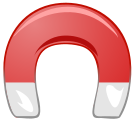Magnets are in common use for all sorts of issues. Magnets are seen in back supports, bracelets, and even in shoes. The use of magnets is continuing to grow in popularity. Magnets are even utilized to aid lessen tension. But what does the study say? Do magnets really aid to facilitate healing?
Lately research conducted by Thomas Skalak, professor and chair of biomedical engineering, and Cassandra Morris, a former Ph.D. student in biomedical engineering at U.Va. looked at the effects of magnets on inflammation. The study was published in the November 2007 edition of the American Journal of Physiology.
The researchers induced inflammation in rats and then utilised magnets shortly afterward. The swelling and inflammation were substantially decreased by the magnets. They employed magnets that were about 10 times stronger than refrigerator magnets which were about 10 Tesla.
They concluded that magnets could be utilized to treat injuries by decreasing inflammation. The magnets work considerably like the much more well-known modalities such as ice. Injured tissues grow to be inflamed simply because blood cells respond by releasing histamine and heparin. Histamine dilates the blood vessels whilst heparin inhibits clotting. Both work to bring far more blood to the injured area. The magnets support to heal by vasoconstricting the blood vessels. Much less blood means less inflammation
1 challenge to making use of magnets is the determination of the right strength for specific tissues. Magnets could end up being the very first treatment for sports injuries like sprains or strains.
Magnets can be thought of as a form of energy healing. The energy comes from the magnetic field. Other studies have shown that magnets help to alleviate pain in a number of conditions such as arthritis and fibromyalgia. Magnetite, a natural magnetic material has been discovered in the brains of animals and could help them to navigate. Magnetic fields may also assist to inhibit discomfort signals in the brain.
Usually practitioners who use magnets use a strength of 1000 to 3000 gauss for chronic diseases like arthritis, injuries and aches and pains. For smaller parts they use magnets with much less power of about 500 gauss.
Magnets are contraindicated for use with pacemakers, implanted defibrillators or when pregnant. There have been many reports of healing with magnets but the use of magnets can be tricky. You have to know what strength to use as properly as where they ought to be placed. Working with an experienced practitioner is recommended.
Possibly someday magnets will be routinely employed for treating inflammation.
Related articles
- Walkin Interview for SRF/JRF in Biomedical Engineering(For M.Tech/B.Tech) (biomedikal.in)
- Biomedical Hospital Engineer Required in Maldives (biomedikal.in)
- Biomedical Sales & Service Engineers required in Kolkata & Nagpur (biomedikal.in)
- Biomedical Programmer Required in Chennai (biomedikal.in)
- Biomedical Engineering Professor required in Ganpat University, Gujrat (biomedikal.in)


